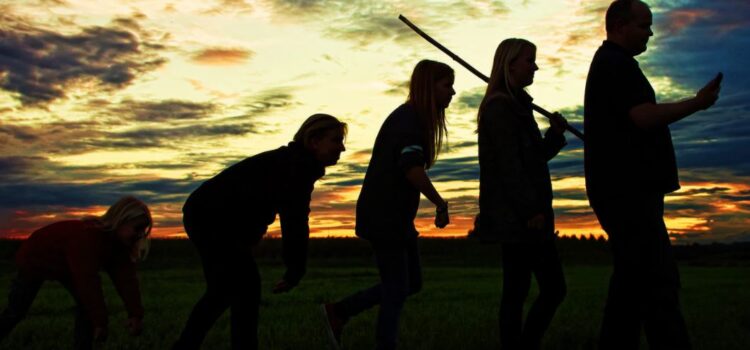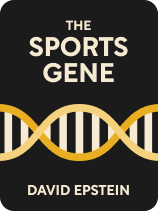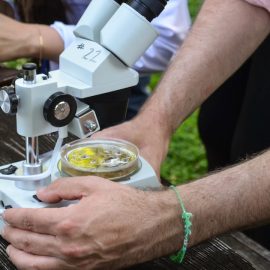

This article is an excerpt from the Shortform book guide to "The Sports Gene" by David Epstein. Shortform has the world's best summaries and analyses of books you should be reading.
Like this article? Sign up for a free trial here .
Has the human species evolved independently around the world? Or is there a common human ancestor?
Until around the 1970s, many anthropologists believed that modern man had evolved independently in different populations around the world. However, the sheer genetic diversity of African populations (compared to the rest of the world) suggests that humans originated in sub-Saharan East Africa and migrated around the world from there.
Keep reading to learn about the evidence of early human migration and how it changed our understanding of human evolution.
The Recent African Origin Model
DNA samples show a greater variety of traits represented in the collective genome of African populations than populations from other parts of the world. For some traits the difference in diversity between DNA of African origin and DNA from the rest of the world is immense. For example, for one set of genes, an African Pygmy population had more diversity than the rest of the world put together.
DNA sampling helped change the way anthropologists construct the story of modern man. The fact that there is so much genetic diversity in Africa and comparatively little elsewhere (particularly in Europe) suggests that humans originated in sub-Saharan East Africa and migrated around the world from there. This theory is called the “Recent African Origin Model.” (The term “recent” should be taken in evolutionary terms. Early human migration is estimated to have taken place 90,000 years ago.)
The Recent African Origin Model also suggests that the reason genetic diversity in a population decreases the farther populations migrated from Africa (with Native Americans being the least diverse) is that only a relatively small group of people set off each time, taking a comparatively small amount of the gene pool with them.
Clusters of Genes as Evidence of Early Human Migration
Having a specific variant of a gene can tell researchers about a person’s ancestry. When small groups of people left the larger human population to colonize a new area they carried a small subset of the population’s genome with them. Their more narrow set of traits propagated through the new population as it grew. Epstein illustrates the principle that certain traits cluster in populations with a few examples:
- Tay-Sachs disease, which affects the nervous system and leads to a very early death, comes from having two mutation-carrying copies of the Hexa gene. It is uncommon around the world but relatively common in Jewish people with ancestors from Poland or Russia. In this population, one in 30 people carries the mutation.
- Epstein notes that almost every human used to be lactose intolerant. When humans domesticated cattle, being able to digest milk became an advantage. Populations in Europe who faced cold winters with few food options needed cattle to survive, and, over generations, developed lactose tolerance. Today almost all people from Denmark and Sweden can drink milk. In contrast, in East and West Africa, most people are still lactose intolerant.
These findings relate to sports in that they shed light on the dominance of African athletes (and athletes with recent African ancestry) in many sports. Epstein notes that, since there is so much more diversity in Africa than in other parts of the world, it makes sense that for a given athletic skill, there will be more individuals in and recently from Africa who will excel at that skill.
| Founder Mutations as Evidence for the Recent African Origins Model Founder mutations are a specific subset of gene clusters that can be used to help track human populations over time. (Skier Eero Antero Mäntyranta’s erythropoietin receptor gene mutation is a Founder Mutation.) Founder mutations are genetic mutations that arise in a single person, the “founder,” and are passed down unchanged from generation to generation. As an article from Scientific American explains, founder mutations are especially useful for anthropologists because they are passed down as a section of a chromosome rather than as a single segment of DNA. This allows anthropologists to tell how long ago the mutation originated. The segment is shortened with each generation (as the chromosome with the mutation is recombined with the corresponding chromosome from the other parent). A longer stretch indicates a younger mutation and a very short segment can indicate an ancient one. A particular founder mutation on the gene that codes for PTC tasting added important evidence to the Recent African Origins Model. PTC is a compound found in plants that most of us perceive as tasting very bitter. This serves as a warning so that we don’t eat plants that are poisonous. A mutation that stops people from tasting PTC arose in the human population roughly 100,000 years ago. Researchers found seven versions of the gene in sub-Saharan Africa with four versions being endemic to Africa. One version is found on rare occasions outside of Africa but has not been found in the Americas, and the other two versions are found throughout the world (one of which is the “non-taster” gene). These results support the idea that humans originated in Africa, and that genetic diversity decreased as people migrated outward. |

———End of Preview———
Like what you just read? Read the rest of the world's best book summary and analysis of David Epstein's "The Sports Gene" at Shortform .
Here's what you'll find in our full The Sports Gene summary :
- A look at how our genes play a determining role in our success in sports
- Why practice doesn't always guarantee success
- The fortuitous gene pairings that can lead to elite athleticism






